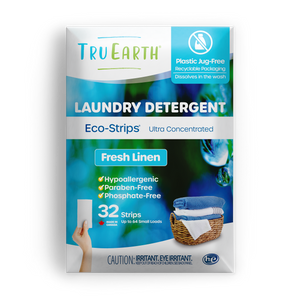In the colder months, a humidifier becomes a trusted ally in maintaining a comfortable home environment. It adds moisture to the air, alleviating issues like dry skin and irritated respiratory passages.
However, like any household appliance, neglecting its cleanliness can lead to problems. In this comprehensive guide, we will explore the essential steps to ensure your humidifier remains a beacon of health, not a breeding ground for potential issues.

The Consequences of a Dirty Humidifier
It's essential to understand the consequences of a neglected humidifier. Over time, these devices become a breeding ground for various contaminants that can have severe consequences for both the humidifier's functionality and the well-being of those inhaling the air it dispenses.
1. Accumulation of Mineral Deposits
As water evaporates in the humidification process, it leaves behind mineral deposits, especially in areas with hard water.
These deposits, primarily composed of calcium and magnesium, gradually build up within the humidifier's components. The impact is twofold: it compromises the efficiency of the humidifier and poses a threat to air quality.
2. Mold Infestation
The dark, damp environment inside a humidifier is an ideal breeding ground for mold. As mold spores multiply, they can be released into the air, triggering respiratory issues and allergies.
Individuals with pre-existing respiratory conditions, such as asthma, may experience exacerbated symptoms when exposed to mold-infested air.
3. Bacterial Growth
Bacteria thrive in moist environments, and the water reservoir of a humidifier provides the perfect conditions for their proliferation.
When these bacteria are dispersed into the air during humidification, they pose a risk of respiratory infections, particularly for individuals with weakened immune systems, children, and the elderly.
4. Compromised Air Quality
A neglected humidifier can transform from a comfort-enhancing appliance to a potential source of indoor air pollution. As contaminants like mineral deposits, mold, and bacteria accumulate, they are dispersed into the air with the humidified mist.
This compromised air quality can lead to a range of health issues, from mild irritation to more severe respiratory problems.
5. Respiratory Problems and Allergies
The harmful particles released by a dirty humidifier can irritate the respiratory system, leading to coughing, wheezing, and shortness of breath. Individuals prone to allergies may experience heightened allergic reactions, with symptoms such as sneezing, nasal congestion, and itchy or watery eyes.
6. Malfunction and Inefficiency
The buildup of mineral deposits affects air quality and hampers the humidifier's performance. The internal components, such as the fan, filter, and water delivery system, can become clogged.
In turn, this will reduce the device's efficiency. A compromised humidifier may struggle to maintain optimal humidity levels, defeating its primary purpose.
7. Unpleasant Odors
Bacterial growth and mold infestation contribute to unpleasant odors emanating from a neglected humidifier. These odors can permeate the air in your home, creating an unwelcome and unhealthy living environment.
Gathering Your Cleaning Arsenal
You'll need:
- White vinegar
- Hydrogen peroxide
- Soft-bristle brush
- Distilled water
- Clean, soft cloth
These household items will be your allies in tackling various aspects of humidifier cleaning.
Disassembly and Inspection
Begin by disconnecting your humidifier from the power source. Disassemble it according to the manufacturer's instructions. Inspect each component for mineral deposits, mold, or any signs of wear. Pay close attention to the water reservoir, filter, and any areas prone to moisture buildup.
Tackling Mineral Deposits
Mineral deposits are a common issue in humidifiers, especially in areas with hard water. To tackle this, fill the water reservoir with a mixture of equal parts white vinegar and water.
Let it sit for 30 minutes, allowing the vinegar's acidity to break down the mineral deposits. Use a soft brush to scrub any stubborn deposits gently. Rinse thoroughly with clean water.
Dealing with Mold and Bacteria
Mold and bacteria thrive in the damp environment of a humidifier. To eliminate these potential health hazards, create a cleaning solution using one teaspoon of hydrogen peroxide per gallon of water.
Use this solution to clean all parts that come into contact with water, including the reservoir, filter, and any internal components. Ensure you follow the manufacturer's guidelines regarding the use of cleaning solutions.
Cleaning the Filter
If your humidifier has a filter, it requires special attention. Check the manufacturer's recommendations for the type of filter your humidifier uses. Some filters are replaceable, while others are reusable and need cleaning.
If reusable, rinse the filter under cool running water to remove impurities. Allow it to air dry completely before reinserting it into the humidifier.
Exterior Cleaning
While the internal components are important, don't neglect the exterior. Wipe down the entire humidifier with a clean, damp cloth to remove dust and any lingering cleaning solutions. Ensure that the external vents are clear and unobstructed for optimal airflow.
Refill with Distilled Water
To maintain the cleanliness of your humidifier, opt for distilled or demineralized water instead of tap water. These types of water have fewer minerals, reducing the risk of mineral deposits. Always follow the manufacturer's recommendations for water usage to prolong the life of your humidifier.
Regular Maintenance Schedule
Cleaning your humidifier should not be a one-time affair. Establish a regular maintenance schedule to ensure its ongoing performance.
Depending on usage, aim to clean your humidifier every one to two weeks during the heating season. Regular maintenance will prevent the buildup of contaminants and guarantee a healthy indoor environment.

A Fresh Start for Your Humidifier
The key to a healthy and efficient humidifier lies in regular and thorough cleaning. By understanding the consequences of neglect, assembling the right cleaning tools, and following a step-by-step process, you can enjoy the benefits of a well-maintained humidifier throughout the winter months.
Remember, a clean humidifier not only enhances air quality but also contributes to a more comfortable and healthier living space for you and your family.


